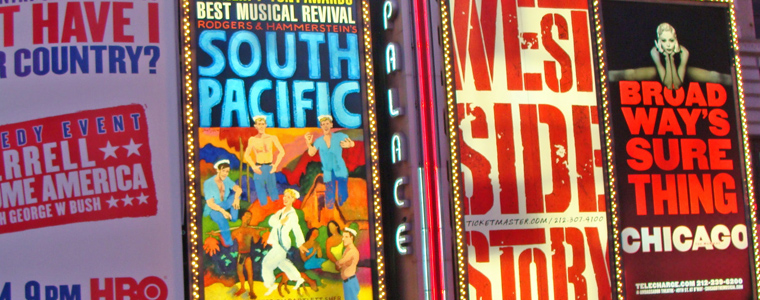One of my all time favorite musicals is “West Side Story” with music by Leonard Bernstein.
I hesitated as I wrote the previous sentence. Not because of any doubt about “West Side Story”, but rather, what should I call “it”? It is a Broadway musical, it is a play, it is an American Opera, it is a commentary on society, culture, community, the psychology of the mind, as well as universal social and global problems. It seamlessly combines words and music and psychological concepts. It shows how people relate (or don’t ) with each other and also it illustrates magnificently how music and psychology of the mind overlap. If depth and complexity can be boiled down to one word (which is impossible), “West Side Story” is brilliant.
But one word is inadequate to describe the impact of “West Side Story” which opened to rave reviews in New York on September 26, 1957. It was subsequently made into a movie, adapted into versions for all types of ensembles, and enjoyed a Broadway revival in the spring of 2009. The collaboration of Leonard Bernstein, Stephen Sondheim, and Jerome Robbins seamlessly blends music, lyrics and dance and much much more.
If we rewind our time machine to the 1950s, we see that “West Side Story” addresses the problems of gangs, violence, bullying, prejudice, hate, and loss of self esteem on the upper west side of Manhattan. Through the eyes of the Caucasian Jets and the Puerto Rican Sharks we see two ethnic groups who argue and fight over their turf, or more accurately, their right to live with dignity and respect.
We witness Officer Krupke, who is insensitive and who represents, thorough displacement, parents and society that have not effectively heeded the cries of young people and others who suffer due to the blindness and deafness of “authority figures”.
We witness violent action (The Rumble) when emotions boil over into mayhem and murder instead of communication and collaboration. If we fast forward to 2013, we feel a time warp – and a stand still. “West Side Story” is timeless.
Not long ago, the US government was shutdown for almost two weeks with a debt ceiling deadline barely 24 hours away. The Democrats and Republicans in the House and Senate are at war with each other, playing politics with policy and with our psyches while in West Side Story we witnessed the two gangs fighting on the west side streets of New York City.
Last year, on a crisp fall morning, not unlike 9-11, we mourned with the residents of Sandy Hook for the unspeakable tragedy that occurred in their elementary school– and not long before that we were in disbelief about the movie theater catastrophe in Aurora, Colorado… and before that we gasped at events in Arizona where innocent people were killed and injured by a gunman, among them US Senator Gabby Giffords. The Boston Marathon never will fade from our memory.
The Recession of 2008 and wars in the middle east have been chilling backdrops to man-made and nature-made horrors in our country and abroad. Clearly complex social, cultural, economic, psychological, and political problems abound both on and off the Broadway stage. Issues such as poverty, war, racism, oppression, immigration, gender equality, and child development and family dysfunction are as abundant in our daily lives as they were in the lives of the 1950s Jets and Sharks.
What can we learn from “West Side Story” in 2013? In particular, what can Bernstein’s music teach us? Leonard Bernstein uses a particular dissonant musical interval as a unifying sonic thread in “West Side Story”. This sound has been known in music history since the 10th century. This interval/sound – or space between the notes – is called the tritone. Historically the tritone was called “the devil in music”. The tritone indicates instability, restlessness, and lack of resolution in sound. If you sing the first two notes of the song “Maria” from “West Side Story”, you will recognize the sound of a tritone
..skip the commercial first in the video – and listen for Maria!
In “West Side Story”, the tritone is used to illustrate lack of resolution from the opening sounds of the show to the final note. It is used musically throughout the entire score to send an aural message about psychological conflict of the mind. You do not need to know music theory to hear how this musical marker creates tension in sound as we yearn for its consonant resolution. However, in “West Side Story”, the tritone does not resolve psychological problems or musical dissonance at the tragic end of the “story”. “West Side Story” ends on a tritone. Tony dies in Maria’s arms.
People can lose hope, self-esteem, and resort to unproductive or destructive actions instead of compromise, negotiation, and resolution when they feel they are not understood and do not have equal opportunity. I am not a political person nor do I intend to write a political blog here. I do, however, believe “West Side Story” fuses music and psychological ideas that are perpetually relevant and thought provoking since social, emotional, economic, political, and psychological conundrums have been and will always be with us in one guise or another.
Music and psychology are pertinent outside the psychologist’s consulting room and musician’s concert hall. The counterpoint, polyphony, and dissonances such as the tritone in music are akin to the multiple psychological complexities in our mental lives. There is a major role for musicians and psychologists and for all of us to seize leadership regarding social, educational, cultural, and political problems.
You and I can help write different endings for modern day “West Side Stories”. It is time to collaborate with others on large and small stages formally, informally, creatively, and meaningfully. This is an important theme I develop in my book, “Melodies of the Mind”. I have been inspired by the music of “West Side Story”.
Can you and I help resolve the tritone in our current turbulent times and in our own lives? If we leave our comfort zones of the concert hall and consulting room and take musical and psychological knowledge to schools, social service organizations, and other unique locations, we are only limited by our vision, persistence, and resilience. The power of music and psychology of the mind can bring closer a day when the Jets will not sing on a tritone to Dear Officer Krupke and can truly feel empowered because “deep down inside us there is good”.
Can you envision some creative ways to use music and psychological ideas outside the consulting room and concert hall in everyday life? I’d love to hear your ideas in the comments below.


